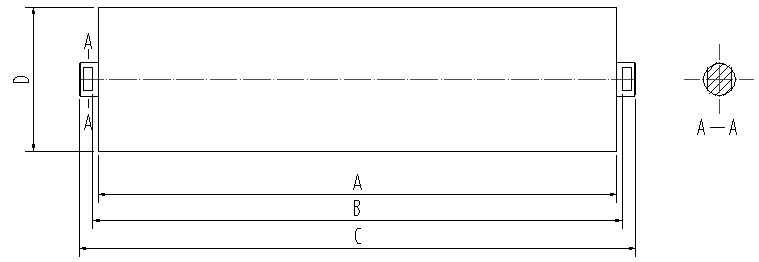 Afrikaans
Afrikaans  Albanian
Albanian  Amharic
Amharic  Arabic
Arabic  Armenian
Armenian  Azerbaijani
Azerbaijani  Basque
Basque  Belarusian
Belarusian  Bengali
Bengali  Bosnian
Bosnian  Bulgarian
Bulgarian  Catalan
Catalan  Cebuano
Cebuano  Corsican
Corsican  Croatian
Croatian  Czech
Czech  Danish
Danish  Dutch
Dutch  English
English  Esperanto
Esperanto  Estonian
Estonian  Finnish
Finnish  French
French  Frisian
Frisian  Galician
Galician  Georgian
Georgian  German
German  Greek
Greek  Gujarati
Gujarati  Haitian Creole
Haitian Creole  hausa
hausa  hawaiian
hawaiian  Hebrew
Hebrew  Hindi
Hindi  Miao
Miao  Hungarian
Hungarian  Icelandic
Icelandic  igbo
igbo  Indonesian
Indonesian  irish
irish  Italian
Italian  Japanese
Japanese  Javanese
Javanese  Kannada
Kannada  kazakh
kazakh  Khmer
Khmer  Rwandese
Rwandese  Korean
Korean  Kurdish
Kurdish  Kyrgyz
Kyrgyz  Lao
Lao  Latin
Latin  Latvian
Latvian  Lithuanian
Lithuanian  Luxembourgish
Luxembourgish  Macedonian
Macedonian  Malgashi
Malgashi  Malay
Malay  Malayalam
Malayalam  Maltese
Maltese  Maori
Maori  Marathi
Marathi  Mongolian
Mongolian  Myanmar
Myanmar  Nepali
Nepali  Norwegian
Norwegian  Norwegian
Norwegian  Occitan
Occitan  Pashto
Pashto  Persian
Persian  Polish
Polish  Portuguese
Portuguese  Punjabi
Punjabi  Romanian
Romanian  Russian
Russian  Samoan
Samoan  Scottish Gaelic
Scottish Gaelic  Serbian
Serbian  Sesotho
Sesotho  Shona
Shona  Sindhi
Sindhi  Sinhala
Sinhala  Slovak
Slovak  Slovenian
Slovenian  Somali
Somali  Spanish
Spanish  Sundanese
Sundanese  Swahili
Swahili  Swedish
Swedish  Tagalog
Tagalog  Tajik
Tajik  Tamil
Tamil  Tatar
Tatar  Telugu
Telugu  Thai
Thai  Turkish
Turkish  Turkmen
Turkmen  Ukrainian
Ukrainian  Urdu
Urdu  Uighur
Uighur  Uzbek
Uzbek  Vietnamese
Vietnamese  Welsh
Welsh  Bantu
Bantu  Yiddish
Yiddish  Yoruba
Yoruba  Zulu
Zulu Understanding Conveyor Training Idlers and Their Importance in Material Handling Systems
Understanding Conveyor Training Idlers A Critical Component in Material Handling Systems
Conveyors play a vital role in various industries, providing an efficient means to transport materials and products across different stages of production, packaging, and distribution. Among the essential components that ensure the effective operation of conveyor systems are training idlers. These components are integral to maintaining proper belt alignment and increasing the overall efficiency of the conveyor system. This article delves into the importance of conveyor training idlers, their function, types, and maintenance aspects.
The Role of Conveyor Training Idlers
Training idlers, also known as conveyor belt tracking idlers, are specially designed rollers located on conveyor systems to assist in keeping the conveyor belt centered and aligned with the frame. Proper alignment is crucial, as a misaligned belt can lead to several operational issues, including increased wear and tear on the belt and components, inefficient material handling, and, in severe cases, system failure.
When the conveyor belt is not aligned correctly, it may drift to one side. This misalignment can cause the edges of the belt to rub against other parts of the conveyor system, leading to potential damage. Training idlers address this problem by redirecting the belt back to its intended path, which not only prolongs the life of the conveyor belt but also enhances performance and safety.
Types of Conveyor Training Idlers
There are several types of training idlers, each designed for specific applications and environments. The most common types include
1. Horizontal Training Idlers These are used primarily in horizontal conveyor systems. They are positioned at the edges of the belt to help correct lateral drift.
2. Crowned Training Idlers These idlers have a slight crown at the center, which encourages the conveyor belt to track toward the center as it operates. This design is particularly effective in preventing belt misalignment.
3. Adjustable Training Idlers These idlers can be adjusted vertically or horizontally to fine-tune belt alignment. This is especially useful in situations where the belt may shift due to load variations or changes in material handling requirements.
4. Self-Aligning Training Idlers This type utilizes a pivoting mechanism that allows the idler to automatically adjust to the belt's position. This feature reduces the need for manual adjustments and enhances ease of maintenance.
Benefits of Using Training Idlers
conveyor training idlers

The installation of conveyor training idlers in material handling systems offers several benefits
- Improved Efficiency By ensuring the conveyor belt runs smoothly and remains properly aligned, training idlers help maintain consistent material flow and increase overall operational efficiency.
- Reduced Wear and Tear Properly aligned belts experience less friction and wear, minimizing the need for frequent replacements and extending the lifespan of both the belt and the conveyor system.
- Lower Maintenance Costs With a reduction in misalignment-related issues, organizations can save on maintenance costs and downtime associated with repairs.
- Enhanced Safety By preventing conveyor belt drift, training idlers reduce the risk of accidents and injuries caused by improperly functioning equipment.
Maintenance of Conveyor Training Idlers
To ensure the effectiveness of training idlers, regular maintenance is essential. Key maintenance steps include
- Frequent Inspections Regular inspections help identify wear or misalignment early, allowing for timely adjustments or replacements.
- Cleaning Keeping idlers clean of dust and debris is vital to their operational effectiveness. Accumulated material can interfere with their function.
- Adjustments Regularly checking and adjusting the positioning of training idlers can help maintain optimal belt alignment as operational conditions change.
In conclusion, conveyor training idlers are a critical component in ensuring optimal performance and longevity of conveyor systems. By keeping the conveyor belts aligned and minimizing wear, training idlers contribute significantly to the overall efficiency and safety of material handling operations. Regular maintenance and proper selection of idler types are paramount for the sustained success of any conveyor system.
-
Revolutionizing Conveyor Reliability with Advanced Rubber Lagging PulleysNewsJul.22,2025
-
Powering Precision and Durability with Expert Manufacturers of Conveyor ComponentsNewsJul.22,2025
-
Optimizing Conveyor Systems with Advanced Conveyor AccessoriesNewsJul.22,2025
-
Maximize Conveyor Efficiency with Quality Conveyor Idler PulleysNewsJul.22,2025
-
Future-Proof Your Conveyor System with High-Performance Polyurethane RollerNewsJul.22,2025
-
Driving Efficiency Forward with Quality Idlers and RollersNewsJul.22,2025





























